|
| |
|
Diesel Emission
Controls |
 |
|
| If you are
thinking about adding HHO to your Diesel engine, excellent choice.
Diesel responds very positive to both hydrogen and oxygen. The increased
oxygen provides more oxidizer for burning the fuel more complete. The
addition of hydrogen burns even more of the Diesel vapors & is an added
fuel. It is a win
win situation.
I have witnessed HHO upgrades to several diesel trucks. All of them
gained more power. All of them gained better fuel efficiency. All of
them gained cleaner exhaust emissions. Consequently, all of the owners
smiled from ear to ear.
- One big rig truck put out black smoke and heavy fumes while
running at idle. That problem was eliminated. The truck ran for 30
minutes, in a garage, and no one noticed any diesel smell. One guy
climbed the stack to check the exhaust. He was amazed.
- Another vehicle, a dump truck, poured out black smoke when it
pulled heavy loads. That problem was solved. It not only no
longer smoked, it ran like it had another higher gear. Hills that
normally were a struggle, were no longer a struggle.
- One pickup truck, was able to spin his tires. while sitting
still.
- I know of one pickup truck that nearly doubled his mileage.
At one time, I had a report that some 2008 diesels came out with an
emissions system that used a small amount of diesel injected directly
into the exhaust to burn unburned fuel. Makes no sense to me, but that
was the report. If you know anything about this, please let me know.
Starting in 2008, some manufacturers started putting computerized
emission controlled systems on diesels. I found information stating that
both Wide Band and Narrow Band O2 sensors are being used, and MAP/MAF
sensors. If that is the case, you will need to determine exactly what
you have before order an Analog or Digital AFR Tuner. HHO Electronics
makes good ones.
Diesel Catalytic converters are called Diesel Particulate Filters
(DPF).
Here is some supporting documentations
http://www.singapore-motors.com/new-diesel-technologies.html
One thing we know for sure is that diesel requires less HHO than
gasoline.
|
|
Diesel Emissions Systems
Components |
The emissions system features 3 main
components:
-
Diesel Particulate Filter:
The diesel particulate filter, or DPF, is
responsible for eliminating particulate matter from
the exhaust system, specifically the soot that is
emitted by diesel engines. Diesel particulate
filters are effective in removing 85 - 100 % of the
soot emitted by diesel engines.
-
The exhaust after treatment
cleans the diesel particulate filter. As you can
imagine, a clogged DPF would lead to poor
performance, efficiency, & fuel economy. To prevent
the DPF from becoming clogged, a process known as
Active Regeneration. During active regeneration, the
engines computer raises exhaust gas temperatures
& injects fuel into the
exhaust system to burn off the soot that
has been collected in the DPF. Without active
regeneration, the DPF would become clogged & need
replacement. In order to keep the diesel particulate
filter clean, active regeneration can occur several
times per day.
-
An exhaust gas recirculation
(EGR) system directs a portion of exhaust gases back
into the engine. The EGR system helps to drastically
reduce the amount of nitrogen oxides that are
emitted. Nitrogen oxides are primarily formed when
nitrogen & oxygen are subjected to high
temperatures. Re-circulating a portion of the
exhaust gas helps to reduce the amount of excess
oxygen being forced into the engine. EGR systems
also reduce the peak combustion temperature, further
reducing the amount of nitrous oxides produced
during combustion.
t
|
|
Tips from HHO Electronics -
How to determine what type of O2 sensor you have |
|
You are expected to do a full test before ordering
anything from HHO Electronics.
The Narrow Band Oxygen Sensors can be checked with a voltmeter. They
have 1, 2, 3 or 4 wires. One of these wires will show a switching
voltage between zero to 1V.... a couple of times per second, in
close loop (that happens after the car is warmed up). Sometimes it is
hard to visualize this signal because the digital voltmeter has a slow
response.
Dodge, Chrysler, and Jeep may add 2.5V to this signal, so the output is
switching between 2.5 to 3.5V.
The Wide Band sensors, on the other hand, work based on current, so
checking the voltages is kind of useless. But still, a voltage check can
be used to at least eliminate some of the other wires.
Wide band sensors come with 4, 5, 6 or even 7 wires. You are interested
only in the one showing a voltage from 2V to maximum 5V. Still, this is
not enough to decide which is the correct wire. One way to find out is
to use a simple resistor, 1k ohm value (1,000 ohms). Simply connect one
terminal to the battery + (+12V) and connect the other terminal to the
testing wire. A pin or sharp test point is helpful (to pass through the
insulation). Or it can be checked at the connector. (if you use a pin to
puncture the insulation in the wire, seal that pin hole up when you
finish. If you do not, water will get in and corrode the wire over
time).
However, with the car started, we want to inject some current to the
sensor. DO NOT do this with a narrow band sensor!
So first, check to see if the sensors is Narrow Band or not, as
described above!
By connecting to resistor to the sensor, a little current is injected at
the terminal. This will not cause any harm to it, but will tell the car
to go lean. Only one of the terminals will work like this, and that is
the terminal you are use with the EFIE. So, turn on the car, wait until
it goes into closed loop and then check the wires with the method
described. When you get a sudden drop in RPM, most probably you have
found the correct wire. This will also prove that the sensor is a wide
band type.
Fuel Saver MPG uses a different method, described here:
http://www.fuelsaver-mpg.com/wide-band-efie-installation-instructions
This method might be correct, but the resistor will prove that the
sensor can be affected by extra current.
If you can determine precisely what type of sensor you have, HHO
Electronics can recommend one of their products. If not, they have other
products which are basically a complement to the EFIE:
 HHO Electronics web site
HHO Electronics web site
|
| |
 EPA - Environmental Protection Agency
EPA - Environmental Protection Agency
 EPA - Diesel Fuel
EPA - Diesel FuelThe U.S. Environmental
Protection Agency (EPA) is establishing a comprehensive national control
program that will regulate the heavy-duty vehicle and its fuel as a
single system. As part of this program, new emission standards will
begin to take effect in model year 2007 and
will apply to heavy-duty highway engines and vehicles.
These standards are based on the use of
high-efficiency catalytic exhaust emission control devices or comparably
effective advanced technologies. Because these devices are
damaged by sulfur, we are also reducing the level of sulfur in highway
diesel fuel by 97 percent by mid-2006. The program provides substantial
flexibility for refiners, especially small
refiners, and for manufacturers of engines and vehicles, to aid them in
implementing the new requirements in the most cost-efficient manner.
Heavy-duty trucks and buses today account for about one-third of NOx
emissions and one quarter of PM emissions from mobile sources. In some
urban areas, the contribution is even greater. EPA’s
new program will result in PM and NOx emission levels that are 90
percent and 95 percent below today’s levels, respectively. The results
of this historic program are comparable to the advent of the catalytic
converter on cars, as the standards will for the
first time result in the widespread introduction of exhaust emission
control devices on diesel engines. And, just as removing lead
from gasoline enables the use of catalytic converters, this program
removes sulfur from diesel fuel to enable the use of these advanced
emission controls on diesel vehicles. |
|
| |
|
| |
|
The 1990 Amendments:
The View from the Driver’s Seat (Gasoline & Diesel)
Typical drivers will probably not be aware of many vehicle and fuel
changes manufacturers are making in response to the 1990 Clean Air Act,
although these changes could add $200 to the cost of a car and a few
cents per gallon to the cost of gasoline. But there are other programs
that drivers will notice, especially in areas with air pollution
problems. New 1994 and later model cars must be equipped with “onboard
diagnostic systems.” These systems feature dashboard warning lights that
alert drivers to malfunctioning emission control equipment. Controlled
by the vehicle’s computer, the onboard diagnostic system must also be
capable of storing trouble codes that help mechanics pinpoint the
malfunction.
Another change involves tampering and mis-fueling.
Such activities have always been discouraged, but were previously
illegal only for commercial operations. “Backyard mechanics” now are
also subject to stiff penalties for deliberate tampering. For
drivers in polluted cities, more changes will be apparent. Some cities
will have to start I/M programs to check vehicle emissions on a regular
basis. Areas that already require I/M testing may have to institute more
stringent programs.
As projected by the Agency in the 2007
rulemaking, all manufacturers are planning to use catalyzed diesel
particulate filters (CDPFs) to comply with the 2007 particulate matter
(PM) standard.
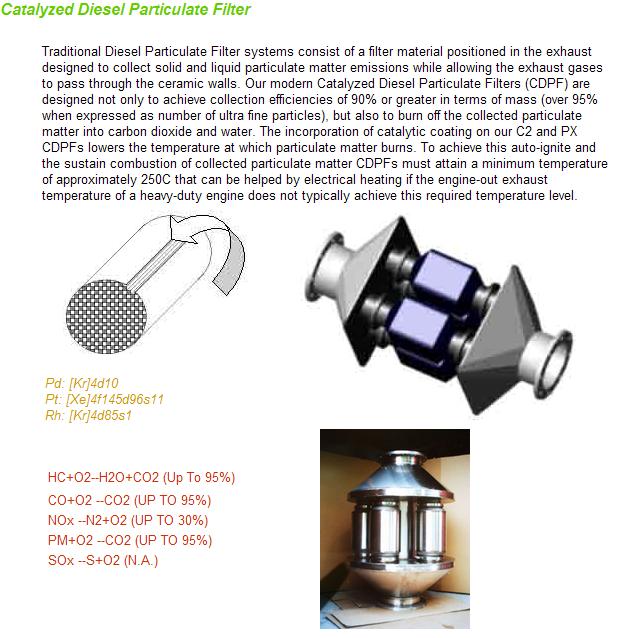
|
|
| |
| |
|
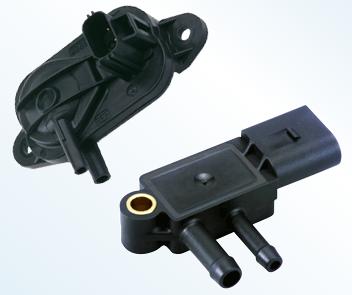 |
DPF Pressure Sensor
Pressure sensing is used to optimize the process of
reducing particulate mater (PM) in diesel exhaust. For example, system
back pressure is measured to determine when a diesel particulate trap or
filter (DPT or DPF) becomes clogged. Back pressure rises as the amount
of particulate matter increases. |
| |
|
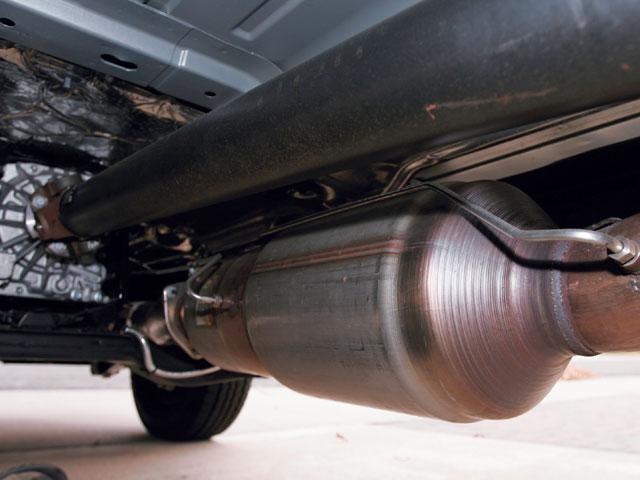 |
Diesel Particulate Filter So called catalytic converter. |
| |
|
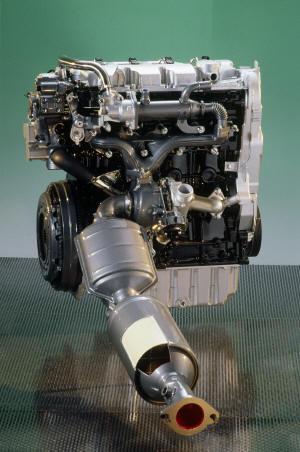 |
Ford
Dura-torq TDCi 2.0L, 136 PS, DPF Engine
These systems rely on the use of a liquid additive to
enable diesel particulates to oxidize at relatively low temperatures in
the filter. Ford has
increased production to satisfy the heavy demand for these DPF equipped
models, particularly in Germany.
The next Ford product to be equipped in production with a
DPF system will be the Ford Mondeo.
The Mondeo Duratorq TDCi with C-DPF will initially be
offered in Germany plus the Scandinavian, Austrian, Swiss and French
markets. Other markets will follow shortly afterwards, depending on
demand which in turn is largely driven by local governmental tax
incentives or penalty regulations.
 Read the article
Read the article |
| |
|
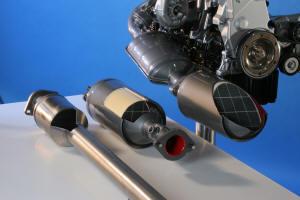 |
Ford DPF
Diesel Particulate Filter (DPF) systems will be made
available across the heart of Ford of Europe vehicle portfolio,
including retro-fit systems for the majority of diesel-powered Ford
vehicles already in customer's hands.
Ford already offers modern diesel
particulate filter (DPF) systems
on the new Ford Focus and Focus
C-Max models. |
| |
|
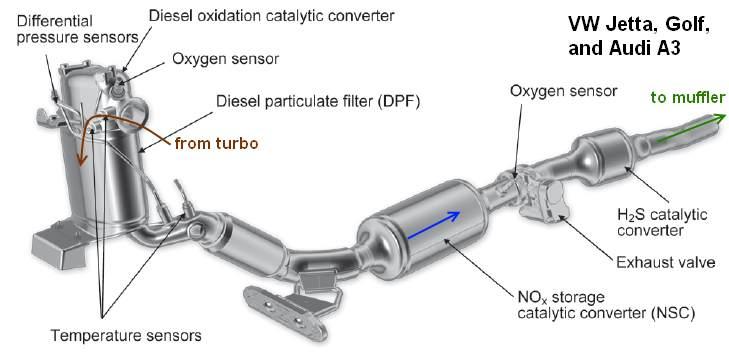 |
| |
|
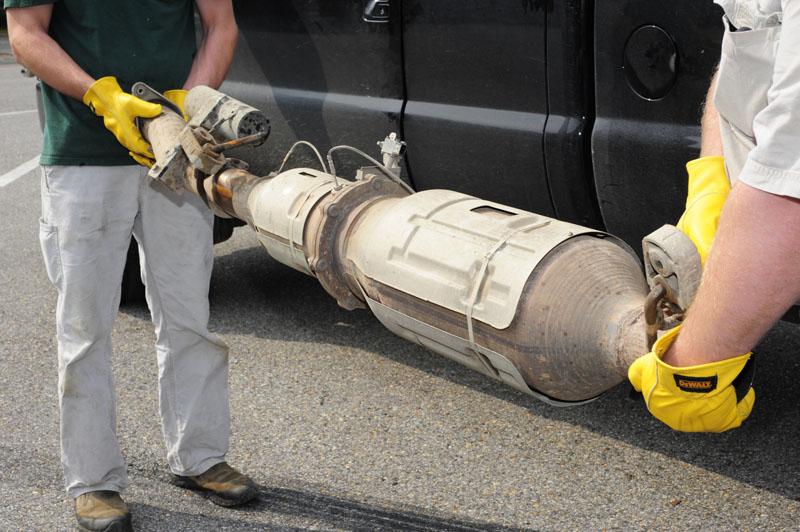 |
| All of the
after market performance companies offering DPF Delete Kits are quick to
point out, these kits are solely for closed-course racing and off-road
use only, and are not street legal in any state. It is Federal Law. Get
busted on a public road with the DPF removed and the owner of the
vehicle faces a $2,500 fine --- and the Installer who did the work faces
a $25,000 fine.... as does the company who sold the DPF Delete Kit.
EPA,,, Thank You for the Boat Anchor ! |
| |
|
| |
|
| |
|

|